Applications
Discover some applications in the field of cellular agriculture:
Cultured Meat
The future of meat lies in groundbreaking lab-grown innovations, leveraging the cultured meat process to create sustainable alternatives to traditional meat production.
Plant Based Food and Diary
In the area of sustainable nutrition, plant-based proteins offer a promising solution to meet the growing demand for environmentally friendly food sources.
Aroma Compounds and Flavours
In the vibrant world of biotechnology, creating aroma compounds, which include both flavours and fragrances, represents a fascinating and rapidly evolving field.
Agriculture Processing Innovations
- Efficiency in production: Cellular agriculture allows for more efficient production processes compared to traditional agriculture. By cultivating cells in controlled environments, resources such as water, land, and feed can be optimized, leading to higher yields per unit area.
- Reduced environmental footprint: Cellular agriculture has the potential to significantly reduce the environmental footprint associated with traditional farming practices. It minimizes the need for large-scale land use, deforestation, potentially reduces carbon dioxide output and water consumption, helping to mitigate habitat destruction and water scarcity issues.
- Meeting growing food demands: With the world's population projected to reach over 9 billion by 2050, cellular agriculture offers a scalable solution to meet the growing demand for food. By increasing production efficiency and reducing resource inputs, cellular agriculture can help address global food security challenges.
- Precision and consistency: Cellular agriculture enables precise control over the production process, leading to consistent product quality and characteristics. Factors such as nutrient composition, flavor profiles, and texture can be tailored to meet consumer preferences more effectively.
- Year-round availability: Unlike traditional farming, which is often seasonal and weather-dependent, cellular agriculture can provide year-round production of food products. This continuous supply helps stabilize markets and ensures a consistent food supply regardless of environmental conditions.
- Minimization of food safety risks: Controlled environments in cellular agriculture reduce the risk of contamination by pathogens such as bacteria and viruses. Strict quality control measures can be implemented throughout the production process to ensure food safety and minimize the risk of foodborne illnesses.
- Potential for urban agriculture: Cellular agriculture opens up possibilities for urban farming and vertical agriculture, where space is limited. By utilizing bioreactors and controlled environments, food can be produced in urban centers, reducing the need for long-distance transportation and storage.
- Diversification of food sources: Cellular agriculture allows for the production of a wide range of food products beyond traditional animal-derived foods. This diversification of food sources offers consumers more choices and promotes a more sustainable and resilient food system.
Bioreactors for Cell Culture
Bioreactors are integral to cellular agriculture, serving as dedicated vessels designed to support cell growth and cultivation. Within bioreactors, cells are provided with precisely controlled conditions supporting their growth, including temperature, pH, oxygen levels, and nutrient supply. They can accommodate various cell types and culture conditions, making them versatile tools for producing a wide range of cellular agriculture products.
Agriculture Processing Innovations
- Cell line development: The process begins with the selection or development of cell lines suitable for the desired product, such as muscle cells for lab-grown meat or yeast cells for protein production. These cell lines are carefully maintained and cultured to ensure their viability and functionality in the bioreactor environment.
- Inoculation and seed culture: Once the cell lines are established, they are inoculated into the bioreactor along with a nutrient-rich growth medium. During the seed culture phase, cells undergo exponential growth, rapidly proliferating to increase their numbers and establish a healthy population within the bioreactor.
- Main culture phase: Following the seed culture, the main culture phase begins, during which cells continue to grow and proliferate under optimized conditions. Nutrients are continuously supplied to the bioreactor to support cell metabolism and sustain growth over an extended period.
- Monitoring and control: Throughout the cell culture process, key parameters such as cell density, viability, and product formation are monitored and controlled. Advanced sensors and control systems within the bioreactor enable real-time monitoring of conditions, allowing for precise adjustments to optimize cell growth and productivity.
- Scaling up for commercial production: As cell cultures reach optimal density and productivity levels, they can be scaled up from laboratory-scale bioreactors to larger production-scale systems. Scaling up involves transitioning to larger vessels while maintaining consistent culture conditions and ensuring the integrity of the cell population.
- Harvesting and product recovery: Once cells have reached the desired stage of growth and product formation, they are harvested from the bioreactor. Depending on the application, products may undergo additional processing steps to isolate and purify the desired components before being used in food or biotechnology applications.
The cell culture process in bioreactors represents a critical step in cellular agriculture, enabling the scalable production of high-quality cellular products for food applications.
Challenges and Future Outlook
As cellular agriculture continues to make progress in transforming the way we produce food, it's essential to recognize the challenges it faces and envision its future potential. From scalability issues to consumer acceptance, this field encounters hurdles that require innovative solutions. However, despite these challenges, the future of cellular agriculture appears promising, offering vast opportunities to revolutionize the food industry and address pressing global issues.
Challenges and Future Prospects
- Scaling production: One of the primary challenges in cellular agriculture is scaling up production to meet consumer demand. While advancements have been made, achieving large-scale production while maintaining cost-effectiveness remains a hurdle.
- Consumer acceptance: Despite the potential benefits of cellular agriculture, consumer acceptance remains a significant barrier. Education and outreach efforts are needed to increase awareness and understanding of these innovative food technologies.
- Regulatory framework: Developing appropriate regulatory frameworks for cellular agriculture products is crucial to ensure safety and compliance with food standards. Clear guidelines are needed to navigate the regulatory landscape effectively.
- Technological advancements: Continued advancements in bioreactor technology, cell culture techniques, and tissue engineering will play a vital role in overcoming current challenges and driving the future growth of cellular agriculture.
- Environmental impact: Addressing environmental concerns, such as energy consumption and waste management, will be essential to ensure that cellular agriculture contributes positively to sustainability goals.
What can Resea Biotec do for your success?
Discover the transformative potential of cellular agriculture with the Applikon autoclavable glass bioreactor. Whether you're a researcher, entrepreneur, or industry professional, our state-of-the-art bioreactor technology empowers you to explore and innovate in the field of cell culture and food production. Join us in shaping the future of food sustainability and learn how our bioreactor solutions can support your journey in cellular agriculture
Feautured Products
Stainless steel bioreactors
Stainless steel bioreactors play a key role in the development and production biotech products. From bench to pilot to full production – the Applikon bioreactors simplify your scale-up through consistent design and scalable control solutions.
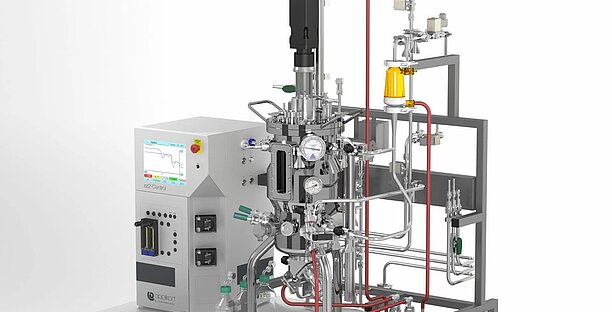
Our portfolio offers both standard systems for fermentation and cell cultures as well as customized systems.
Glass autoclavable bioreactors
The Applikon autoclavable bioreactor is a very popular bioreactor. It is available in 2, 3, 5, 7, 15 and 20-litre volumes. It is easy to adapt if your research changes. Thanks to the modularity and flexibility of the glass bioreactors, you can modify the system to fit any adaptations in process demands.
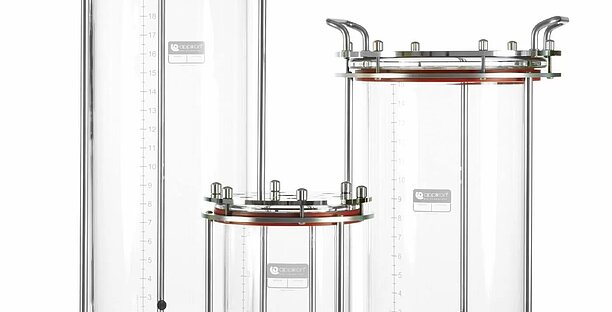
The glass bioreactors help support and optimise your research and process development. The systems are suitable for both cell culture and microbial culture applications.
Mini bioreactors MiniBio
The MiniBio is a true scale down of the traditional lab-scale bioreactor. The reactor is available in 250 mL, 500 mL and 1000 mL volumes and customizable to meet the demands of any bioprocess. It saves time, requires minimal bench space and generates more data with fully scalable results.

Despite its small footprint, the MiniBio can meet any process requirements. Whether for Batch, FedBatch or perfusion processes.
Livit Flex bioprocess control system
The Livit Flex bioprocess controller is an intuitive and easily configurable bioprocess controller that fits any biotech upstream R&D application. Livit Flex can be configured as a single or dual control system for single-use or multi-use bioreactors to optimize bench space in the laboratory.
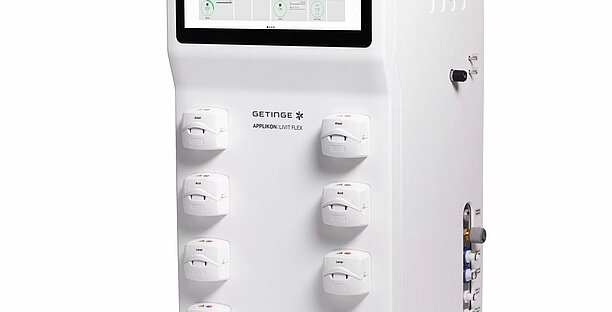
Livit Flex is ideal for use with single-use and reusable bioreactors up to 20L as well as our single-use pilot reactors.
my-Control
This colorful controller with the built-in web server is the ideal solution for small scale bioreactors starting at 50mL working volume. It uses minimal bench space and allows parallel bioprocessing for microbial as well as cell cultures.
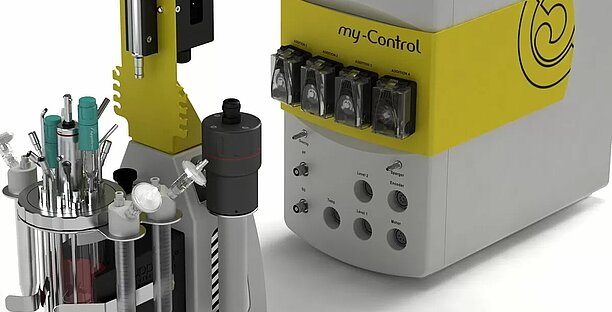
The myControl is the perfect solution for screening, process optimization or media development.
Hamilton ARC Sensors
Hamilton Arc simplifies the integration of sensors by revolutionizing the communication between sensors, end users and process control systems.
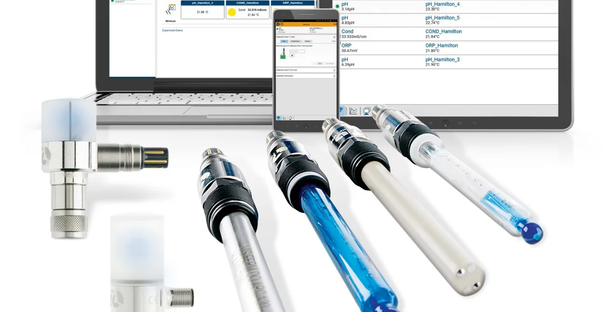
Whether pH, dissolved oxygen or cell density - all sensor values can be measured and transmitted digitally to the control unit in real time.
We are eager to receive your feedback
* Mandatory fields
